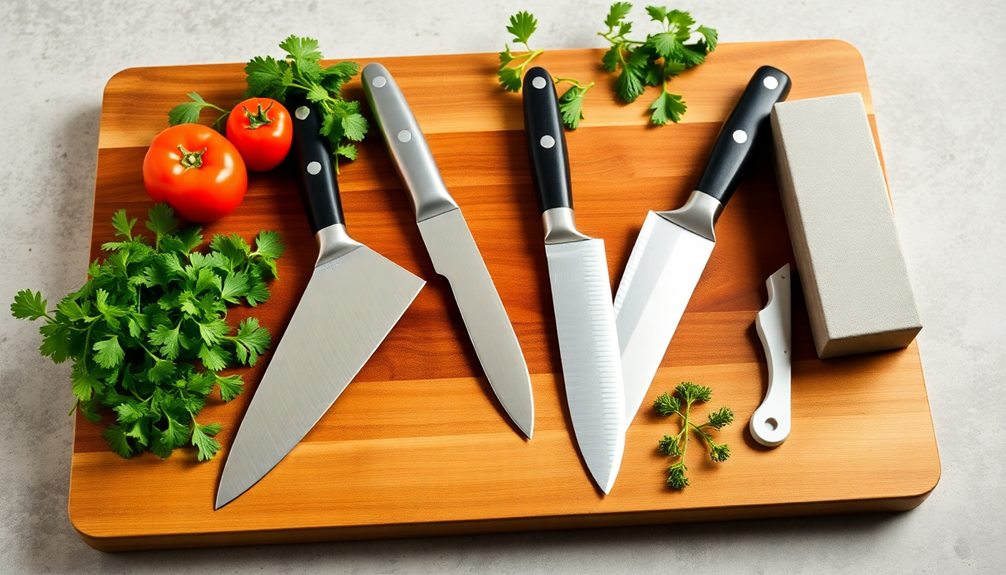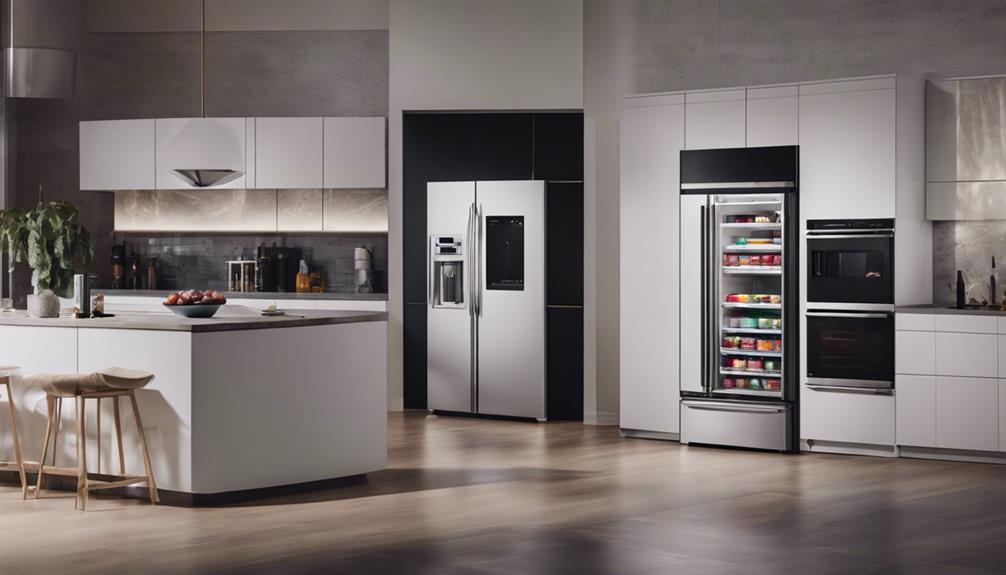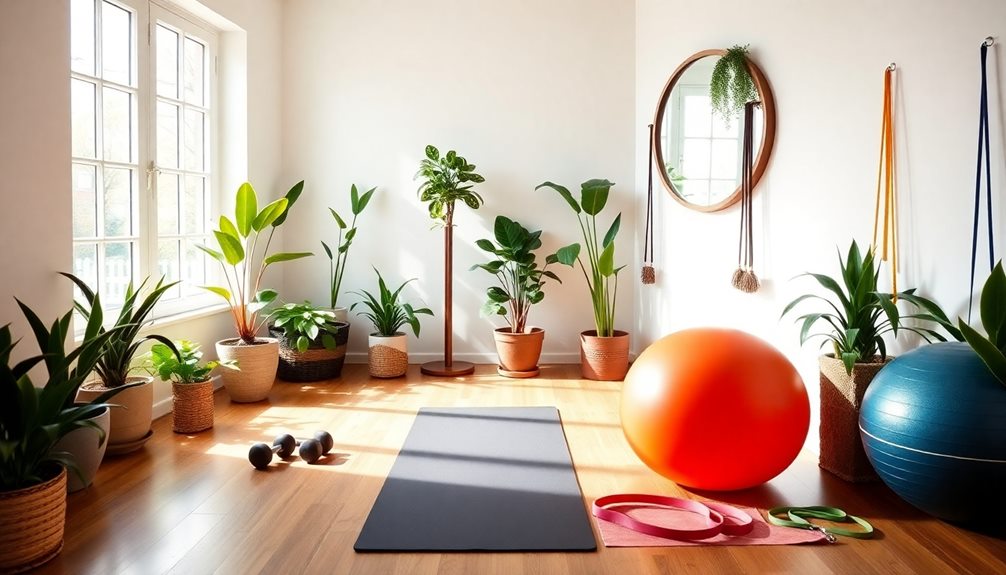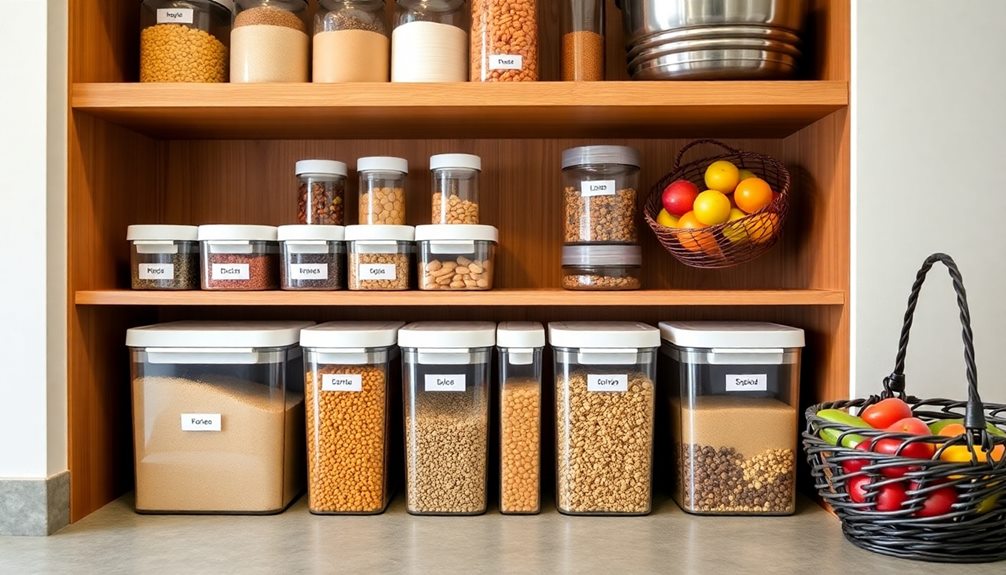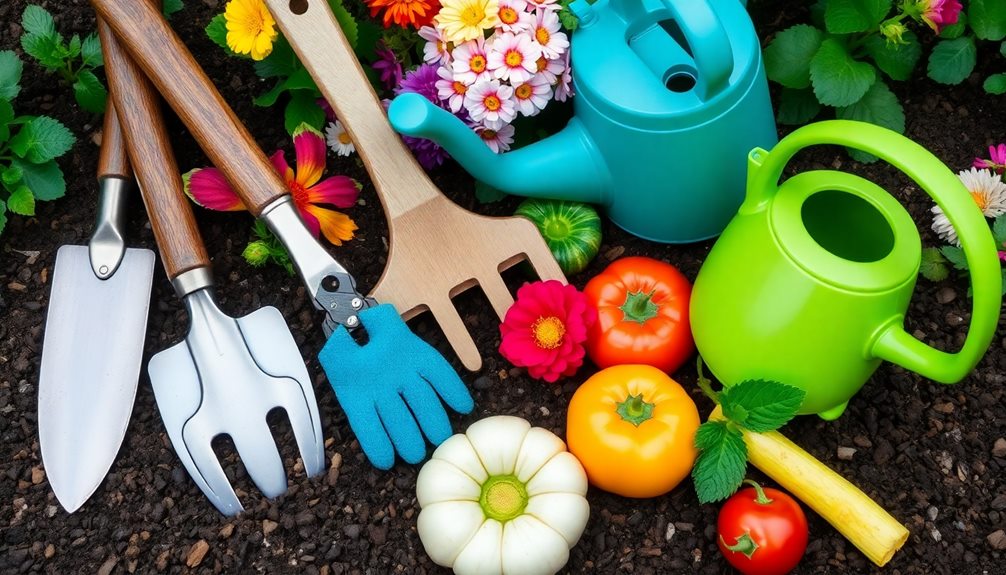Building your collection of essential kitchen knives starts with four key pieces: a chef knife, serrated bread knife, utility knife, and paring knife. These tools cover most cooking tasks and offer flexibility as you grow your skills. As you advance, consider adding specialized knives like a boning or Santoku knife to refine your techniques. Focus on quality over quantity; high-carbon stainless steel knives with full-tang construction will guarantee longevity and performance. Don't forget to maintain your knives with regular honing and proper storage. Stick around, and you'll discover more tips to enhance your kitchen experience.
Key Takeaways
- Start your collection with essential knives: chef knife, serrated bread knife, utility knife, and paring knife for versatility in the kitchen.
- Gradually expand your knife collection based on your cooking habits, skills, and budget, adding specialized knives as needed.
- Prioritize high-quality, full-tang knives made from high-carbon stainless steel for better performance, durability, and comfort.
- Regular maintenance, including honing and proper storage, extends the lifespan of your knives and improves your cooking experience.
- Consider your cooking style and needs when shopping for knives, focusing on materials, reviews, and warranties for informed choices.
Essential Types of Kitchen Knives
When it comes to equipping your kitchen, knowing the essential types of kitchen knives is crucial. Every cook needs a reliable set of chef's knives to tackle various tasks. At the top of the list is the chef knife, typically measuring 6 to 8 inches. It excels at chopping, mincing, and butchering, making it the most versatile tool in your knife collection.
Next, you'll want a serrated bread knife. Its jagged edge allows for easy slicing through crusty loaves, cakes, and soft fruits with minimal drag.
For precision tasks, the utility knife is necessary. This smaller version of the chef knife can step in as a paring knife when needed, helping you with intricate slicing.
While specialized knives like the santoku knife are designed for specific tasks—such as slicing vegetables—your focus should be on these foundational tools.
The essential knives you choose will greatly influence your cooking experience. By having a well-rounded collection, you'll guarantee you're prepared for any culinary adventure that comes your way.
Specialized Knives to Consider
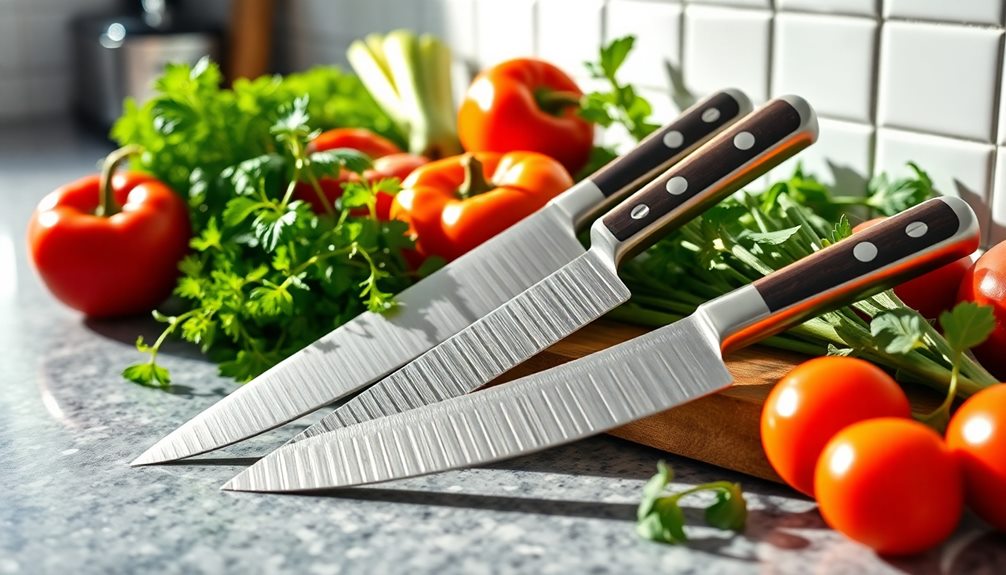
When you're in the kitchen, having the right knife can make all the difference.
Specialized knives, like the Santoku or boning knife, offer unique functions that enhance your cooking experience.
Choosing the right style not only improves your efficiency but also elevates the quality of your dishes.
Unique Knife Functions
If you're looking to elevate your culinary skills, specialized knives can make all the difference in your kitchen. Each knife has unique functions that cater to specific tasks, enhancing your efficiency and precision.
Here are four specialized knives to take into account:
- Santoku Knife: This Japanese-style knife features a shorter, flatter blade that excels in push-cut chopping. It's perfect for slicing vegetables, meat, and fish with precision.
- Nakiri Knife: Designed specifically for slicing thick vegetables, the nakiri resembles a small cleaver. It's ideal for vegetable-heavy cooking, allowing you to chop with ease.
- Boning Knife: With a long, flexible blade, the boning knife enhances butchery efficiency. It's perfect for precise deboning of whole cuts of meat.
- Cleaver: This knife's large blade makes it essential for tackling tough tendons and thick vegetables. It's perfect for heavy-duty tasks and animal butchery.
Additionally, think about a Carving Knife for smooth, precise cuts; it's essential for carving large proteins and guarantees an elegant presentation.
Incorporating these best knives into your kitchen will open up a world of unique knife functions, making your cooking experience more enjoyable.
Choosing the Right Style
Selecting the right style of specialized knives can greatly enhance your cooking experience, allowing you to tackle a variety of tasks with ease.
When you're building your kitchen, consider adding a Santoku knife for precision chopping, especially for vegetables. Its shorter, flatter blade makes it a favorite in Japanese cuisine.
If you often work with thick vegetables, the Nakiri knife is a must-have; its squared-off blade resembles a small cleaver, making vegetable prep efficient.
For those who enjoy meat preparation, a boning knife is essential. Its long, flexible blade allows you to debone cuts of meat with control and accuracy.
You might also want a sturdy cleaver in your collection. This heavyweight knife is perfect for cutting through tough tendons and thick veggies.
Deciding on Knife Quantity
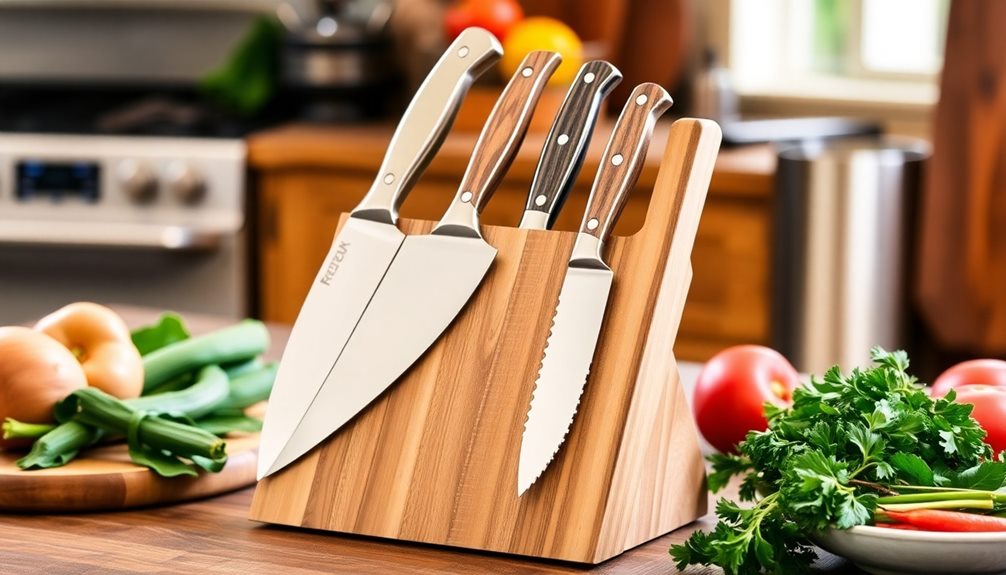
When deciding on the number of knives you need, start with the four essentials: a chef knife, bread knife, paring knife, and utility knife.
It's smart to gradually build your collection based on your cooking habits and budget.
Starter Knife Recommendations
For anyone stepping into the world of cooking, a well-chosen starter knife set is essential. Investing in high-quality knives can dramatically enhance your cooking experience.
You don't need a massive collection right away; just four essential knives will cover a wide range of tasks in your kitchen.
Here's a recommended starter knife set:
- Chef Knife: The workhorse of your kitchen, perfect for chopping, slicing, and dicing.
- Bread Knife: With its serrated edge, this knife makes cutting through crusty loaves effortless.
- Paring Knife: Ideal for intricate tasks like peeling fruits and vegetables or mincing garlic.
- Utility Knife: A versatile tool for various cutting tasks, bridging the gap between a chef knife and a paring knife.
These essential knives will accommodate your cooking habits while saving valuable kitchen space.
By focusing on high-quality options instead of numerous lower-quality knives, you'll improve your efficiency and enjoyment in the kitchen.
As you grow more comfortable, you can gradually expand your knife collection based on your evolving needs.
Gradual Collection Strategy
Building your knife collection should be a thoughtful process, balancing your cooking needs with available space and budget. Start with the essentials: a chef knife, bread knife, paring knife, and utility knife. These high-quality knives provide the versatility you need to tackle a variety of kitchen tasks without cluttering your space.
Consider a gradual collection strategy. Instead of rushing to purchase every knife on the market, focus on acquiring one or two high-quality knives at a time. This approach allows you to invest wisely and guarantees each knife serves a specific purpose.
By limiting your collection to four essential knives, you can efficiently manage your kitchen tasks while avoiding overwhelming your workspace. Space considerations are important, too. Each knife should enhance your cooking experience, so think about how often you'll use each one.
As you grow more confident in your cooking skills, you can gradually add specialized knives to your collection. This method not only keeps your kitchen organized but also helps you develop a deeper appreciation for each tool you own. Ultimately, a thoughtful, gradual collection will elevate your culinary adventures.
Quality Over Quantity
Choosing the right quantity of knives for your collection is just as important as selecting their quality.
When building a knife collection, prioritize quality over quantity. High-quality knives, especially full-tang, fully-forged options, offer better performance and longevity, making them a worthwhile investment.
Instead of overcrowding your space with numerous tools, focus on essential knives that cover your culinary needs.
Here's a recommended starter set for home cooks:
- Chef Knife: The workhorse of the kitchen, ideal for chopping and slicing.
- Bread Knife: Perfect for cutting through crusty loaves without squishing the bread.
- Paring Knife: Great for peeling and intricate tasks that require precision.
- Utility Knife: Versatile for various cutting tasks, filling the gap between a chef knife and a paring knife.
Knife Quality and Durability
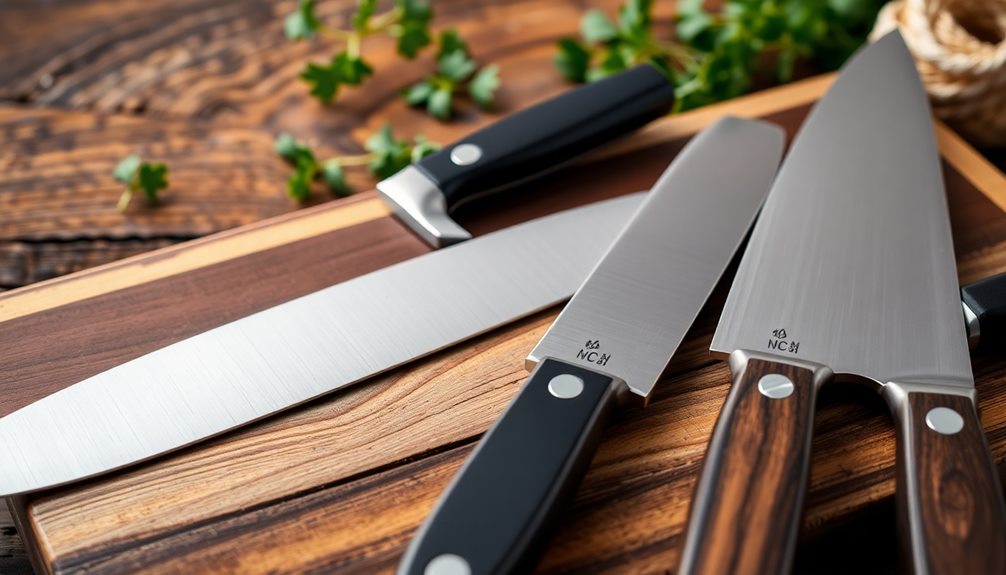
A high-quality kitchen knife is essential for any serious home chef, as it directly impacts your cooking experience and efficiency.
When you invest in knives made with premium materials like high-carbon stainless steel, you're ensuring they maintain their sharpness longer and resist chipping or corrosion.
Look for knives featuring full-tang construction, which enhances durability and balance during use, making them easier to handle.
Ergonomic handles are another important aspect, designed to provide comfort and control, reducing fatigue during prolonged chopping sessions.
The longevity of your knife heavily relies on a consistent maintenance routine; regular honing and proper storage can greatly extend its lifespan.
Shopping for Knives
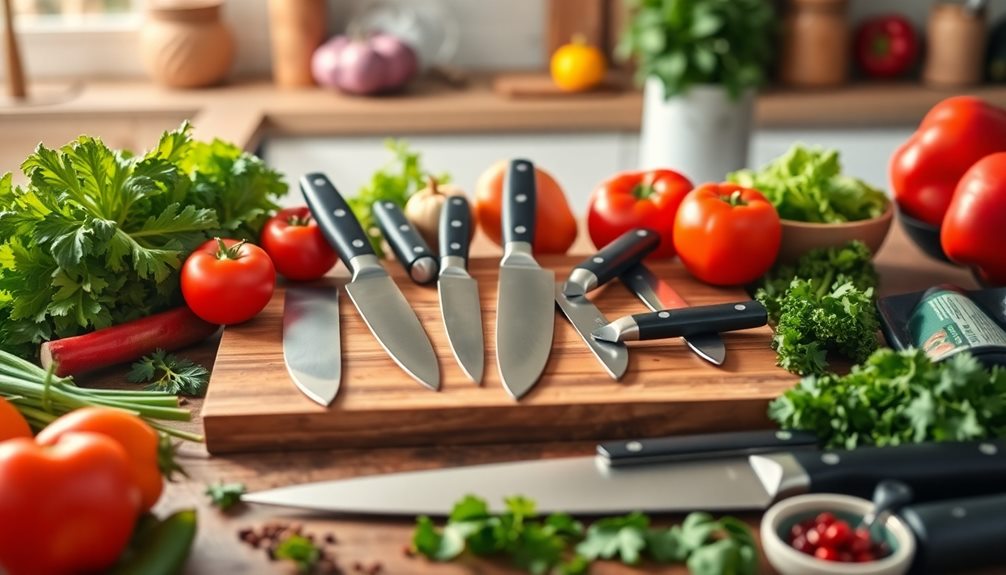
When it comes to shopping for kitchen knives, understanding your needs and preferences can make all the difference.
Begin by evaluating your cooking habits. Are you a casual cook or a kitchen enthusiast? This will guide you in deciding between individual knives or a complete set.
A recommended starter set should include:
- Chef knife
- Bread knife
- Paring knife
- Utility knife
These essentials cover most tasks in your culinary adventures.
Focus on high-quality materials, like full-tang and fully-forged construction, to guarantee longevity in your knife collection.
Don't overlook customer reviews and warranties when selecting knives. These insights can reveal performance and reliability, helping you make informed choices.
If you find gaps in your existing collection, consider specialized knives such as a boning knife for meat preparation or a santoku knife for versatile chopping and slicing.
With thoughtful consideration and research, you can build a knife collection that not only meets your needs but also enhances your kitchen experience.
Happy shopping!
Knife Maintenance and Accessories
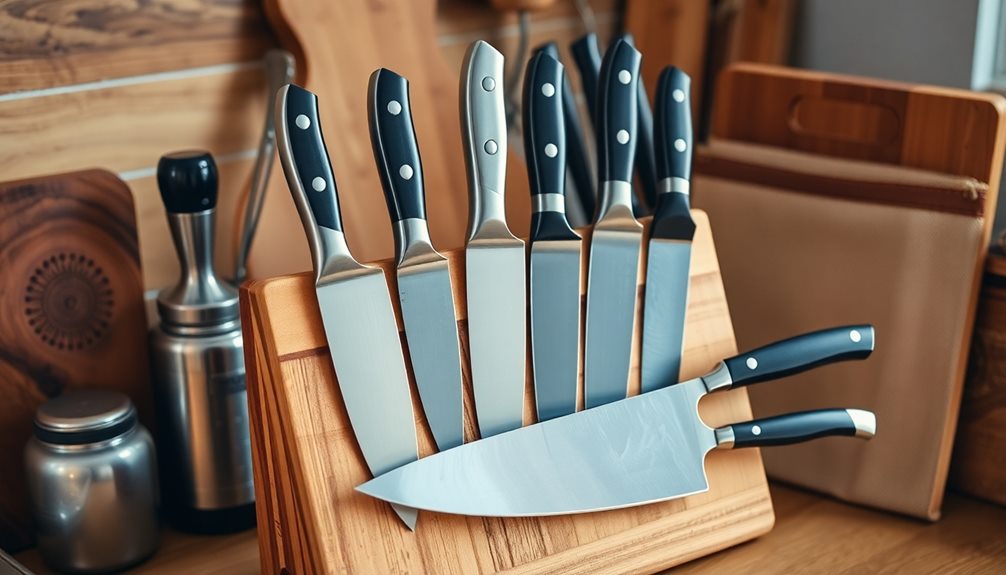
Maintaining your knife collection is vital for guaranteeing their performance and longevity. Regular knife maintenance not only enhances functionality but also extends the life of your knives. Start by honing your knives with a honing steel, like the ZWILLING Kramer 12.25-Inch Honing Steel, to keep edges sharp between sharpenings. Sharpening knives every few months using whetstones or electric sharpeners is essential for peak performance.
To protect your investment, always hand wash knives instead of using a dishwasher, which can cause damage and rust. Proper storage solutions, such as magnetic knife strips or a knife block, guarantee that blades stay sharp and safe from dulling.
Here's a quick reference table for effective knife maintenance:
| Maintenance Task | Recommended Tool |
|---|---|
| Regular Honing | Honing Steel |
| Sharpening | Whetstone or Electric Sharpener |
| Cleaning | Hand Washing |
| Storage | Magnetic Knife Strips |
| Accessories | Shapton Ha No Kuromaku Set |
Investing in quality knife accessories can greatly enhance your collection's longevity. Take care of your knives, and they'll reward you with years of excellent service.
Frequently Asked Questions
What Are the 5 Essential Knives?
You need five essential knives in your kitchen: a versatile chef's knife for chopping, a paring knife for peeling, a serrated bread knife for crusty loaves, a utility knife for precision, and a boning knife for meat.
What Are the 3 Essential Knives?
When you think of a culinary adventure, three essential knives come to mind: the versatile chef's knife for all-purpose tasks, the precise paring knife for delicate work, and the serrated bread knife for effortless slicing.
What Knives Should Every Kitchen Have?
Every kitchen should have a chef's knife for versatility, a paring knife for precision tasks, and a serrated bread knife for clean cuts. Consider adding a utility knife and boning knife to enhance your collection.
How to Build a Kitchen Knife Collection?
Building your knife collection isn't about quantity; it's about quality. Start with a few essential knives, then expand based on what you enjoy cooking. Prioritize durability and maintain them well for lasting performance.
Conclusion
Building your kitchen knife collection doesn't have to be overwhelming. Remember, "a good knife is a chef's best friend." Focus on the essential types and consider adding specialized knives as you grow more confident in your skills. Choose quality over quantity, and you'll enjoy your knives for years to come. With proper maintenance and the right accessories, your collection will not only serve you well but also inspire your culinary creativity. Happy cooking!
